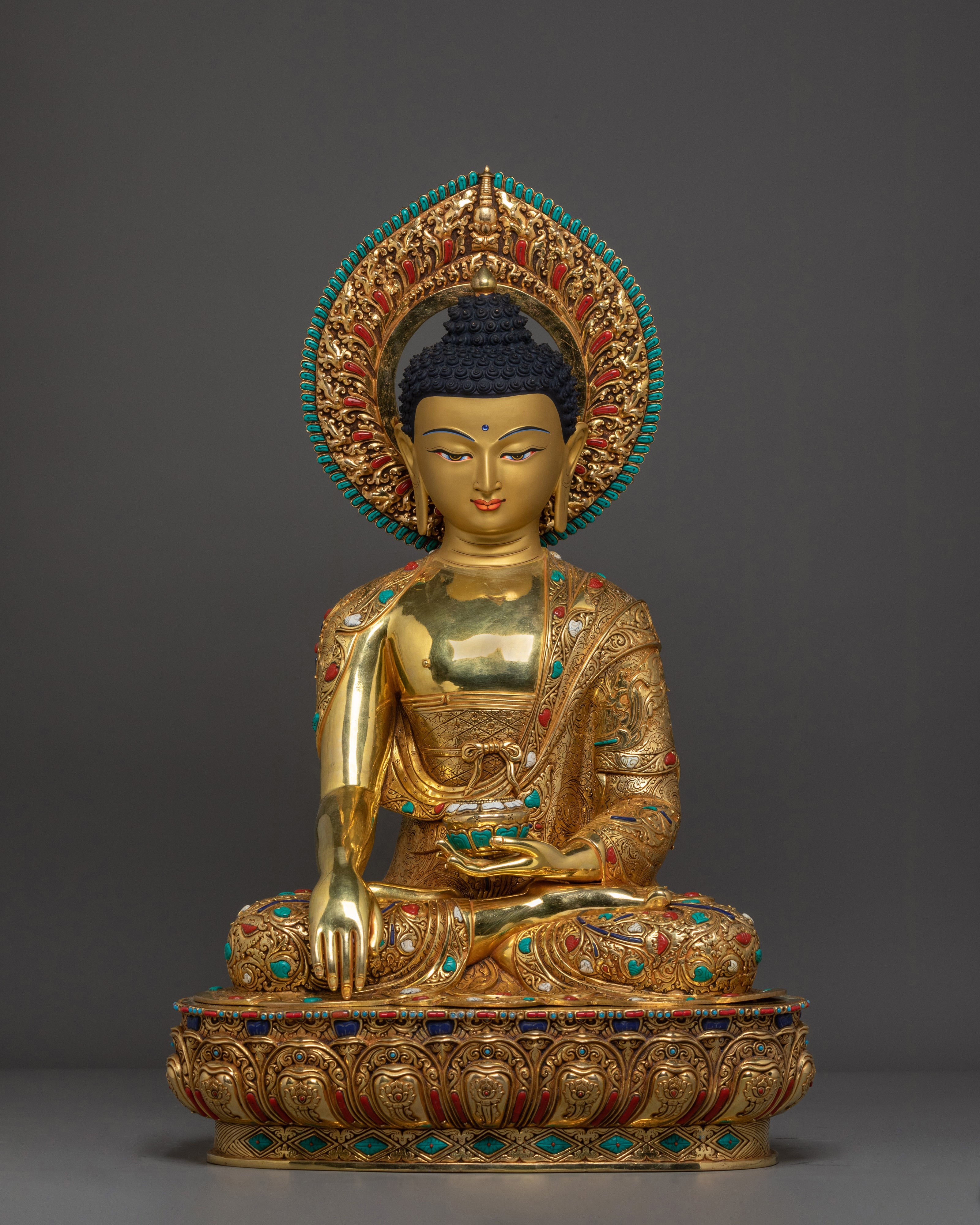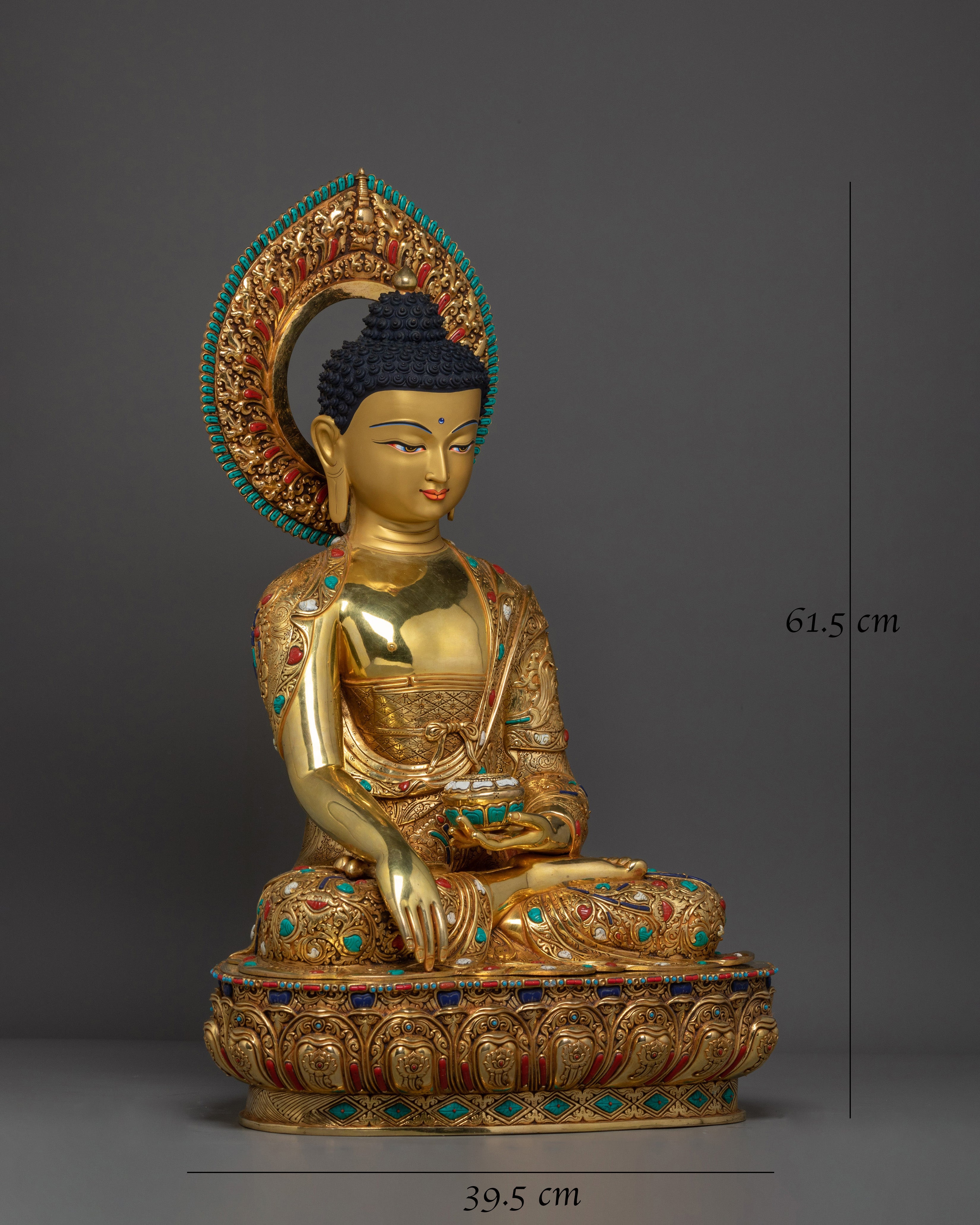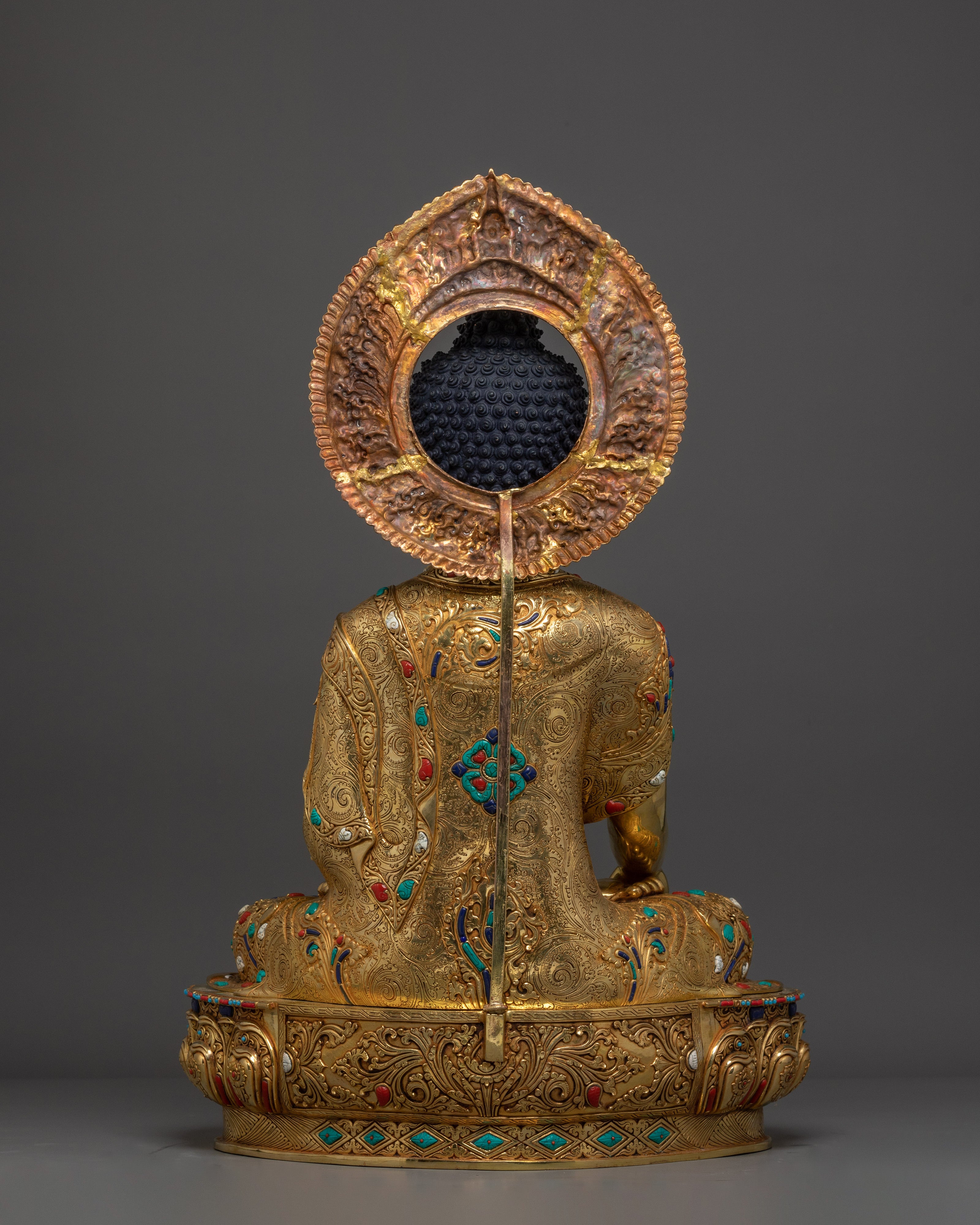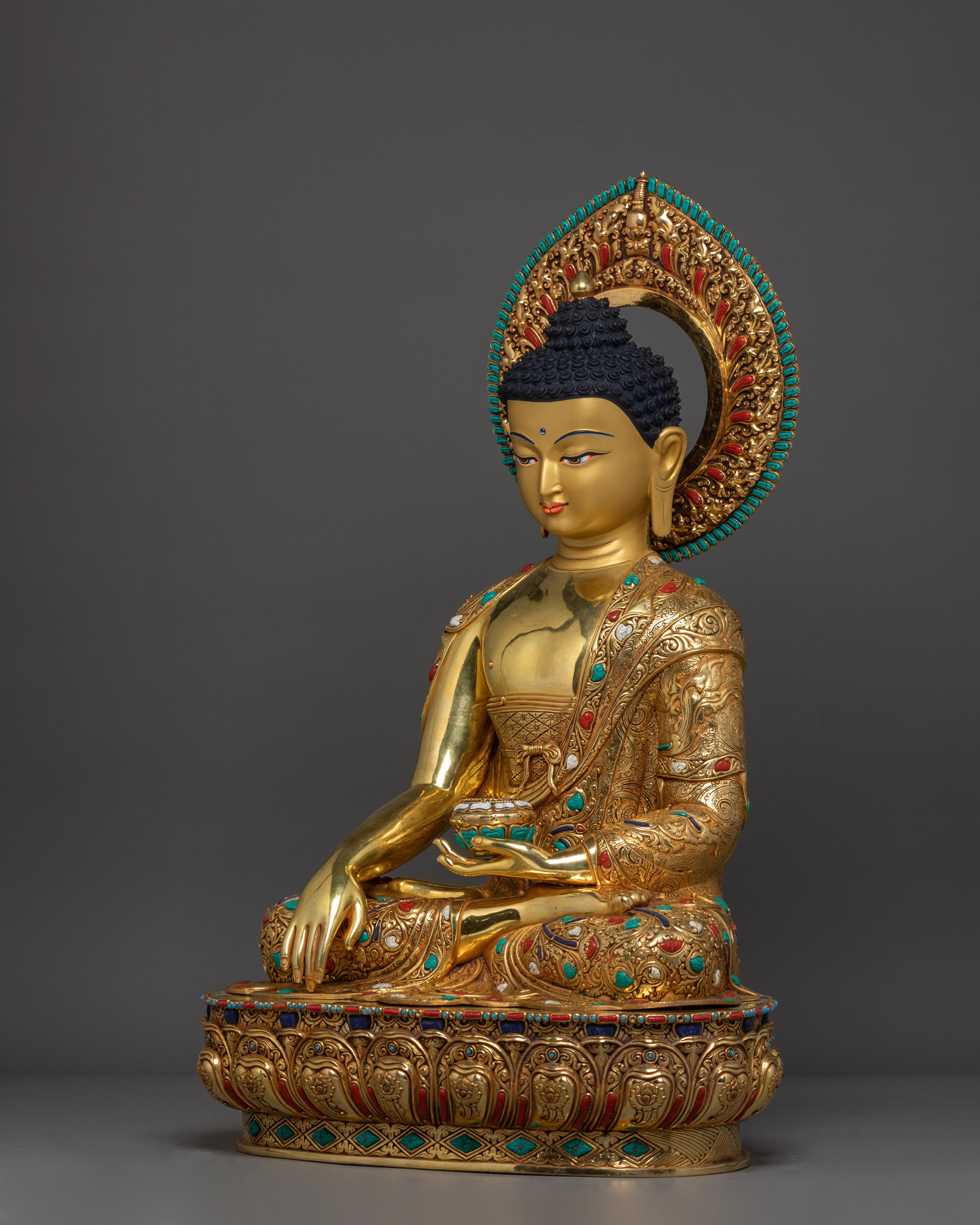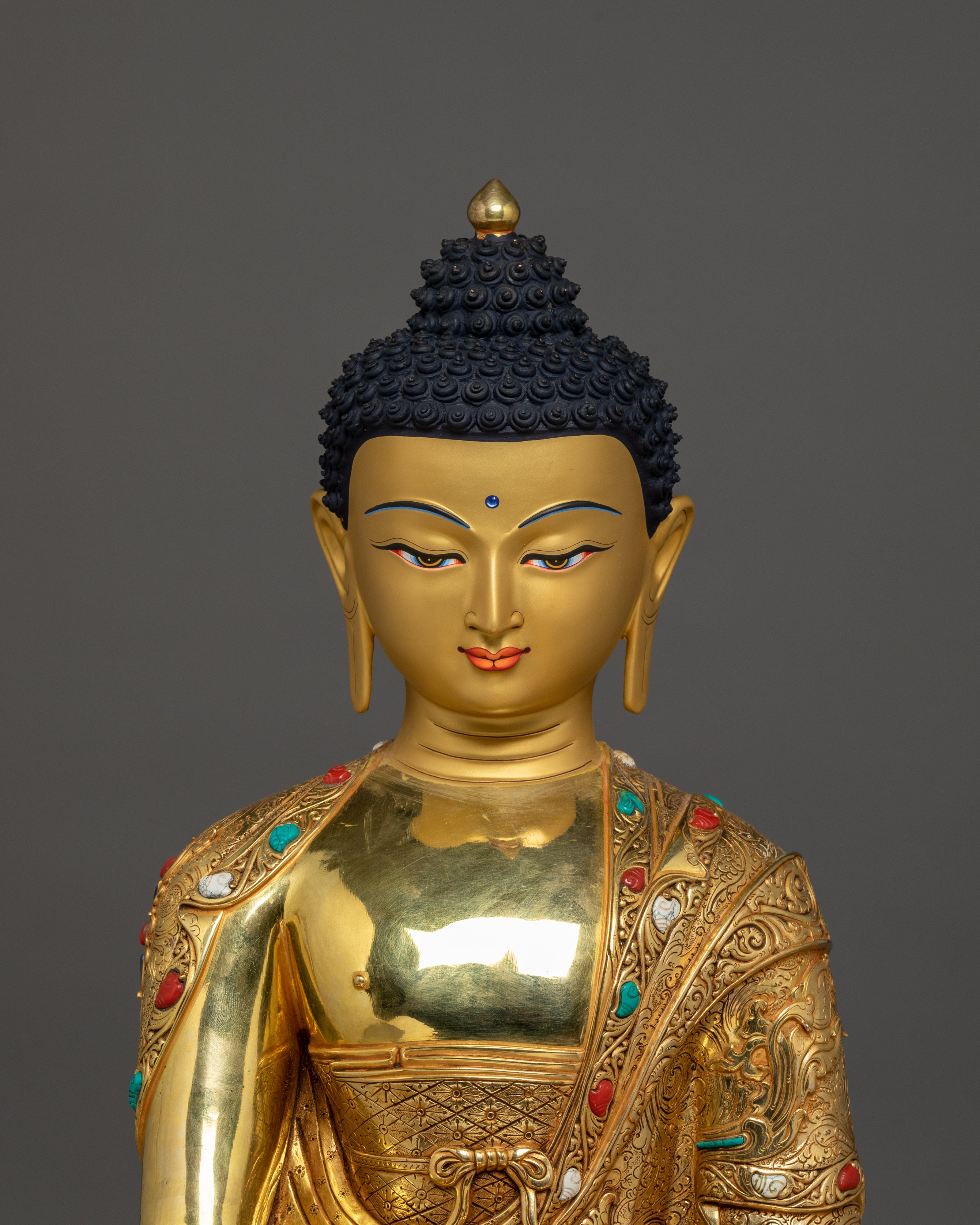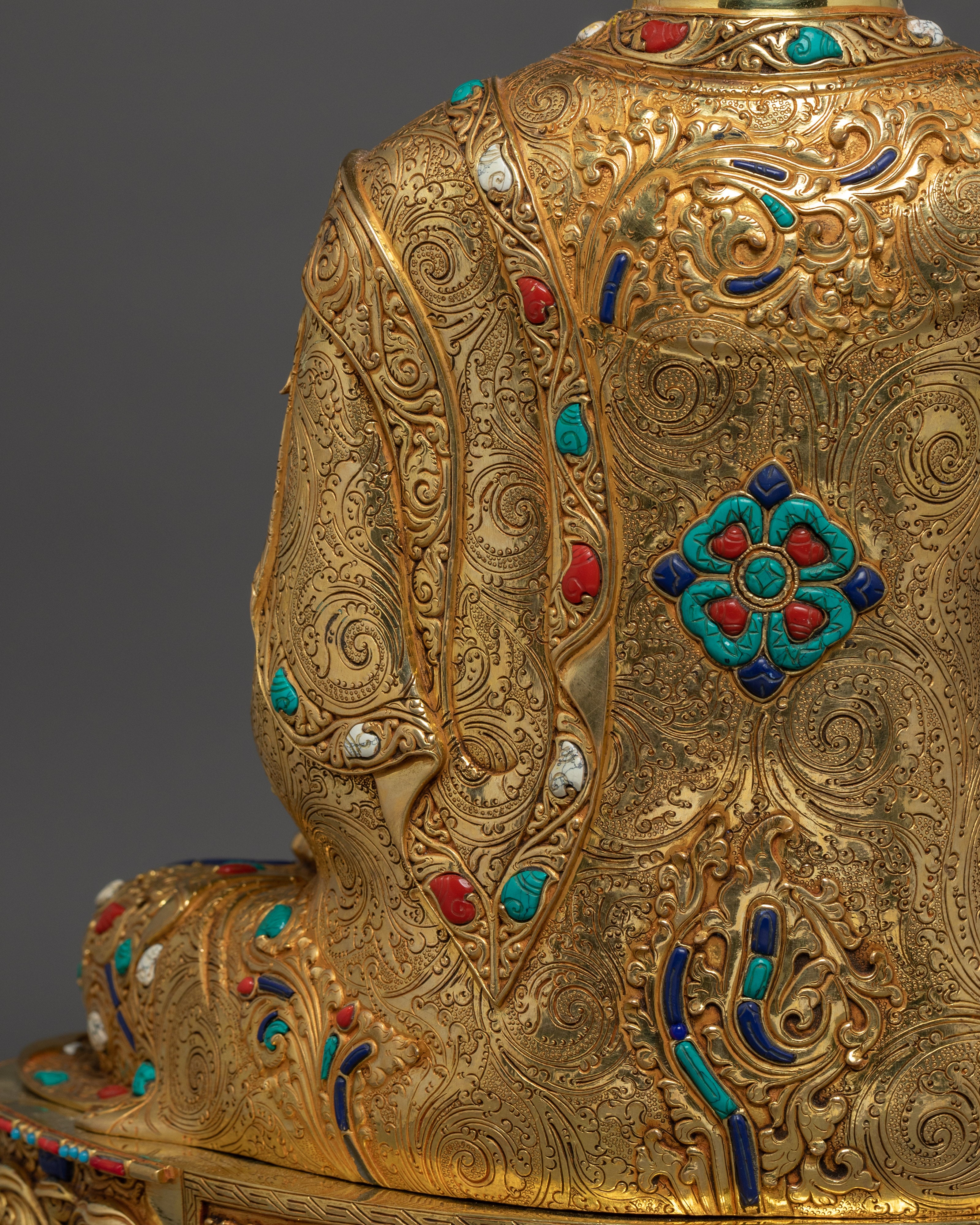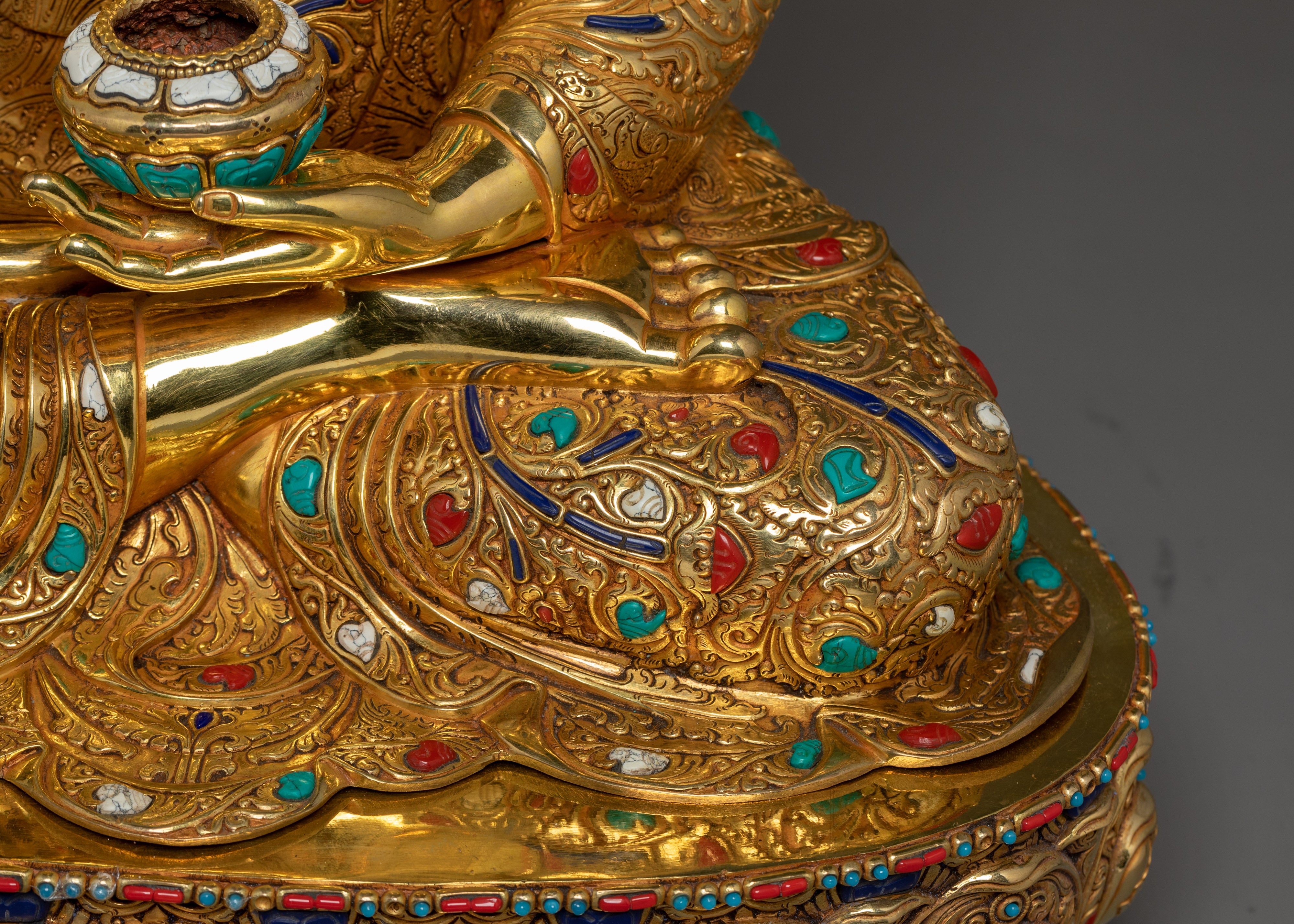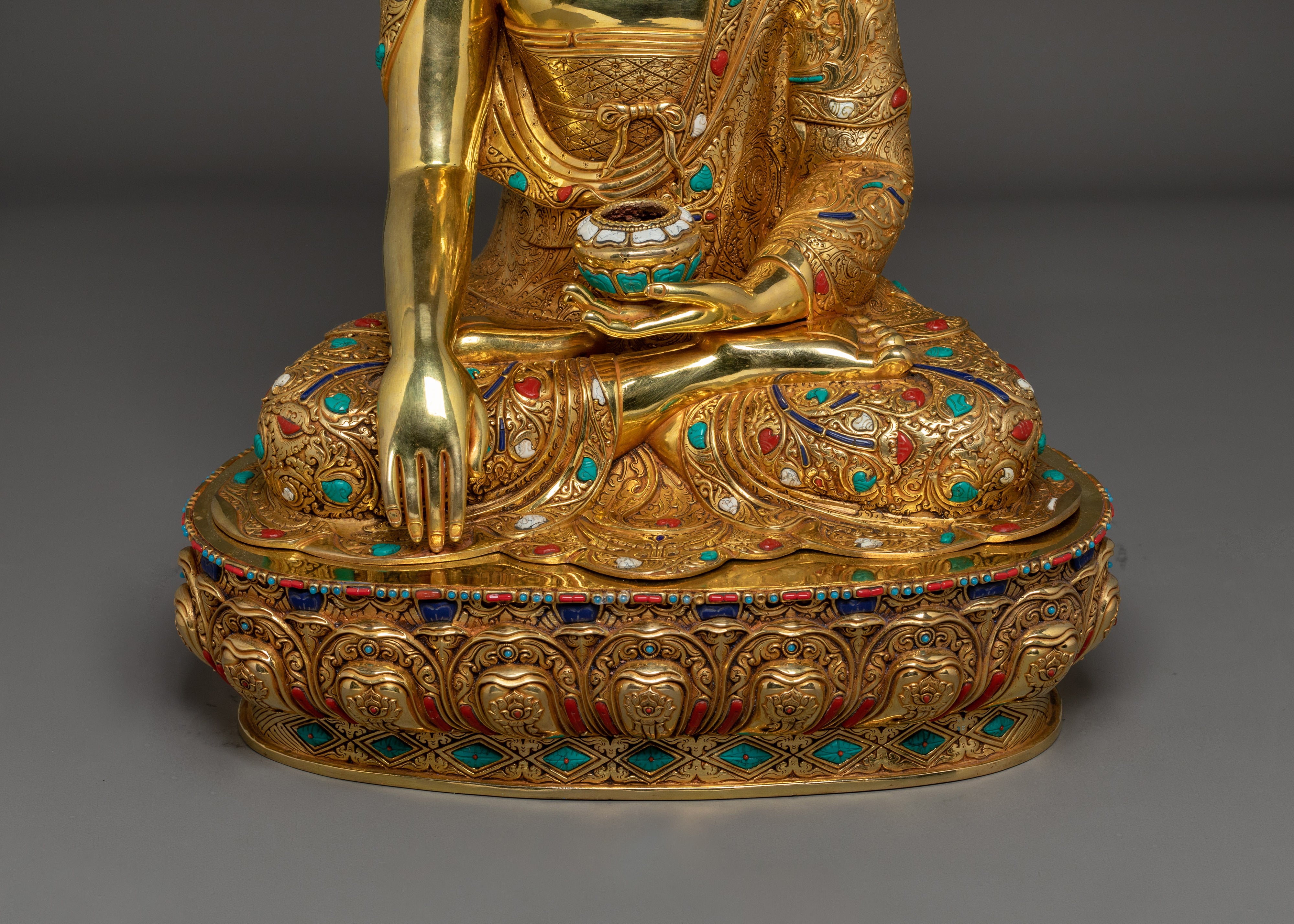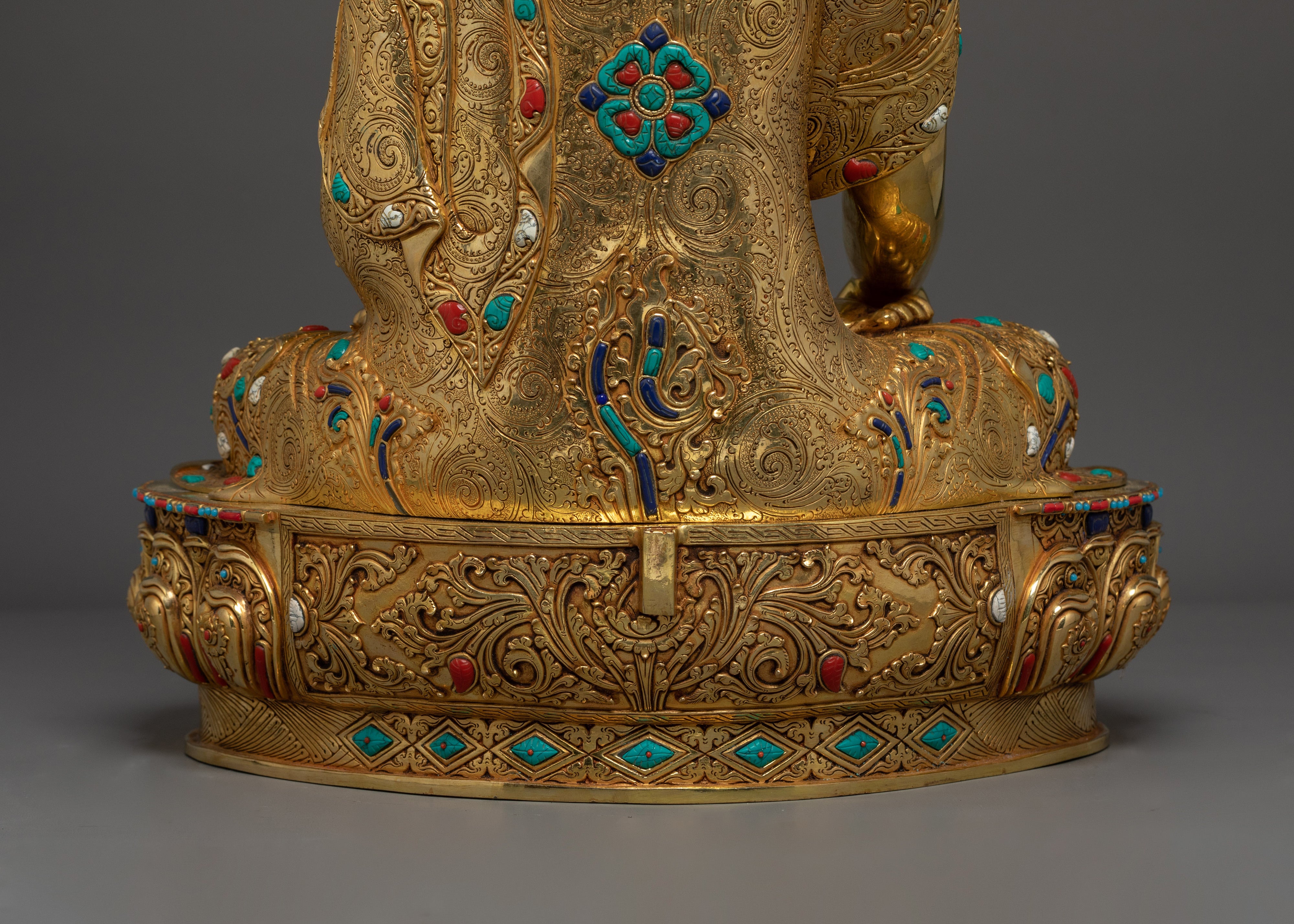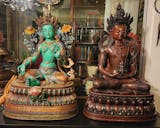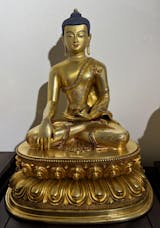Statue of Gautama Buddha, Dharma Teacher | Sage of the Shakyas
This Gautama Buddha Dharma Teacher Statue, also known as Shakyamuni Buddha, measures 61.5 cm (24.2 inches) in height and 39.5 cm (15.6 inches) at the base, with a weight of 13.21 kg. It is made of copper, covered with a triple layer of 24K gold gilding, and carved with deeply engraved carvings that produce a magnificent 3D-like effect. This sculpture, adorned with hand-carved gemstones crafted by expert Nepalese artisans, elegantly symbolizes the sacred traditions of Himalayan Buddhism, making it an appropriate addition to altars, meditation spaces, or holy collections.
This statue of Shakyamuni Buddha, also known as the "Sage of the Shakya Clan," presents a refined expression of Buddhist iconography, highlighting his origin from the Shakya lineage, where “Muni” signifies a sage. He is portrayed seated on a lotus throne atop a moon disc, symbolizing spiritual awakening and inner purity. His right hand reaches toward the earth in the Bhumisparsha Mudra, marking the moment of his enlightenment and triumph over illusion. The left hand rests calmly in his lap, holding an alms bowl, a symbol of renunciation and contentment. Behind his head, a radiant halo signifies the brilliance of enlightenment and spiritual illumination. Depicted in the Vajra posture, this image reflects steadfast meditation, wisdom, and the serene strength of the enlightened mind.
Size: 24.2”/61.5cm (Height) x 15.6”/39.5cm (Base)
Weight: 13.21 kg
Material: 24K Gold Gilded, Gold & Acrylic Paintings, Copper Body, Handcarved Gemstones
Shakyamuni Buddha, also known as Gautama Buddha, is the historical founder of Buddhism and the embodiment of enlightenment. Born as Siddhartha Gautama, he renounced a life of luxury to seek the truth, ultimately attaining enlightenment and sharing his teachings with the world. His iconic earth-touching gesture signifies his triumph over Mara, the embodiment of worldly distractions, and his connection to the Earth as a witness to his enlightenment. Shakyamuni Buddha’s teachings on the Four Noble Truths and the Eightfold Path continue to guide practitioners toward liberation from suffering.

